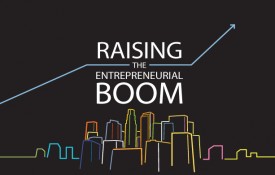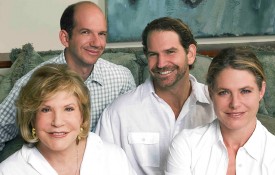At Jukin Media, I run a 220+ employee global digital media company. We are headquartered in Los Angeles and have physical offices in New York, London, and New Delhi, with people in 10 other countries around the world. We have been very fortunate that everybody is fairly collaborative, regardless of location. In any given meeting, people are calling in or Zooming in, depending on the subject matter. In some ways, we’ve always had a fairly remote workforce. There certainly has been some positives to productivity going full remote, and in my last article, I discussed the best ways to be productive during this time. However, I don’t think we would be nearly as successful running a remote workforce if we didn’t create the culture and ethos from our home base in Los Angeles.
In a pre-COVID world, if you walked into our headquarters in L.A., you would experience a lively atmosphere, open floor plan, collaborative environment, and high energy: Imagine a millennial social newsroom. I was most joyous when hearing sounds of monitors and televisions, phones ringing, office chatter, and extensive typing on keyboards. All of this provided a high-energy adrenaline to the fast-paced industry we work in.
You cannot put a price tag on the social value of being in the work environment.
Our office has been another vital character in our startup’s story, and we are proud of it. It’s where we’re able to show off the blood, sweat, and tears that represent us within the walls of our building. The foundation of our culture stems from within these walls. We are not a venture-backed company that has bought our way into the space. We’ve grown over time from a one-bedroom apartment to a 30,000+ sq. ft., bustling office facility. If you would have come in around Halloween, you would’ve seen the office transformed into a nearly fully functional haunted house. During Thanksgiving, we cater a large meal at the office and eat it together at a long table. And during the holidays, you’ll find Christmas lights, trees, and menorahs throughout the building. People have made lifelong friendships and even romantic relationships within these walls, and I’m proud to say that a few marriages have occurred because of us.
Being in a creative industry, there is no substitute for physical interaction. You cannot bounce ideas over Zoom like you would in a room. You cannot talk over people; you speak one at a time. Zoom has actually pulled us apart when it comes to the creative process. After researching this topic, I found a great passage from a Fortune article about Steve Jobs and how he obsessed over face-to-face meetings. “There’s a temptation in our networked age to think that ideas can be developed by email and iChat,” he told Walter Isaacson, author of a bestselling Jobs biography. “That’s crazy. Creativity comes from spontaneous meetings, from random discussions.” When asked by Fortune to recount the birth of the iPhone, Jobs said the earliest ideas arose from informal gabbing: “We all had cell phones. We just hated them, they were so awful to use.”
It is ingrained in our DNA to be in the physical presence of one another. This is where the birth of inspiration and motivation comes from. This is why performances by our favorite bands and artists are much better live than virtual. This is why people still go to live plays as opposed to just going to the movies. Our current mundane lives and schedules have turned more transactional and less creative. Our social lives are suffering at the moment by the lack of interaction with our peers and colleagues. The hallway chats and water-cooler talks cannot be replaced with Slack or texting. You cannot put a price tag on the social value of being in the work environment.
As much as I miss our office and the office environment, I think we will never go back to an entire in-office workforce. In our new future, we will adapt to a hybrid model where some people and companies will allow more work from home, along with a possible three- or four-day in-office requirement instead of a full five-day week. The isolation that we’re all feeling from working remote loses the connection of being part of a team and community with a set of principles and values.













































